

Module 1: Power up
Whaowhia te kete mātauranga – Fill the basket of knowledge
Nau mai haere mai, welcome to your Power Challenge journey.
Get ready to unpack your power kit, meet your Wonder Project Ambassador, and learn about energy in all its forms.
Before you get started, make sure you’ve done your pre-challenge survey.
Powering a brighter future
We rely on electricity for just about everything. It keeps our fridges humming and our toasters toasting. Scientists predict we’ll use electricity more in the future, which means we’ll need to make even more of it to keep the lights on.
STEM superstars to the rescue
From towering turbines, to solar panels soaking up the rays of te rā (the sun), innovators across the world are reimagining how to generate more electricity in ways that are friendlier for the planet.
Let’s check in with STEM superstar Gene to hear more.
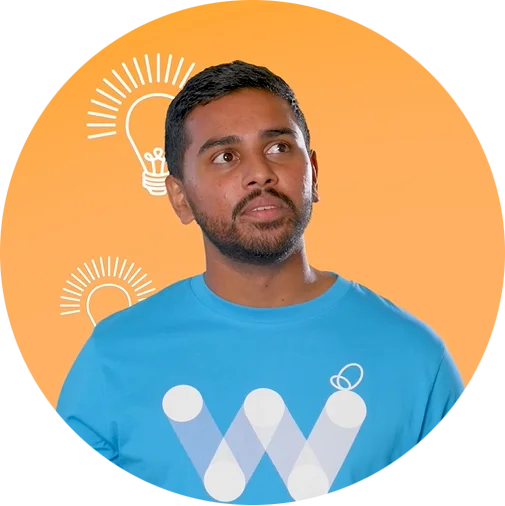
Video transcript: Welcome to the Power Challenge
Prepare to power up
Now it’s time for you to harness the power of electricity and engineer your own solution to our challenge pātai (question):
I wonder how to power a brighter future?
Meet your support crew
First thing’s first – it takes a whole rōpū to unlock the potential of power! Your Wonder Project ambassador and kaiako are here to help you through each module of the Power Challenge.
Say kia ora to your ambassador and whakarongo to their incredible STEM story.
Unpack your power kit
The Wonder Project has hooked you up with the tools you need to charge through this challenge. Unpack your power kit as a class. What do you think the different pieces are for?
You'll also need to collect a few things as a class for your journey:
- A fan – a 40cm desk fan will work best
- A desk lamp or strong torch
- Recyclable materials for your turbine blades.
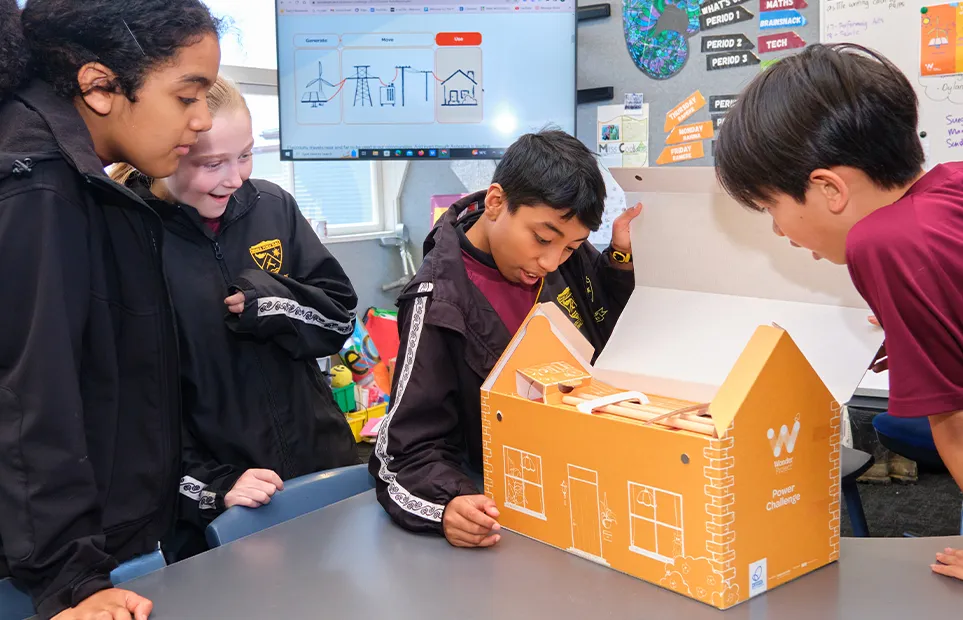
Smile for the camera
At the end of the Power Challenge, your school will have the chance to make and share a short video or poster of your challenge experience to be in to win a prize!
Make sure you’re documenting your Power Challenge journey with heaps of videos and photos and start thinking about the story you want to tell. Check out Activity 4.3 if you want to get ahead.
Energy
Energy makes things happen. It makes machines work and living things grow. In fact, every time we do anything, we use energy.
Energy is defined as the ability to do work.
Let's check in with power experts Lewis and Cha Cha to discover more:

Video transcript: Energy transformation and transfer
Do you remember the some of the energy forms Lewis and Cha Cha mentioned?
Poster: Forms of energy
Poster: Ngā momo pūngao
Energy transformation and transfer
Now we know that energy can't be created or destroyed, but it can be transformed and transferred.
- Energy transformation – when energy changes from one form to another
- Energy transfer – when energy moves from one place to another, or one object to another
Activity 1.1: Transforming energy
Test out a bunch of everyday energy transformations in rōpū of four. Then see if you can fill in the blanks with the correct forms of energy!
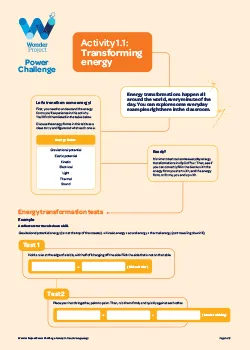
Ngohe 1.1: Te Whakahuri Pūngao
Whakamātauria ētahi huringa pūngao o ia rā i ētahi rōpū takiwhā. Kia mutu, whakakīia ngā āputa ki ngā āhua o ngā pūngao e tika ana!
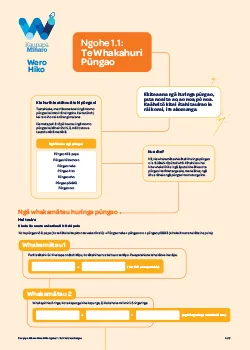
Illuminating electricity
At the flick of a switch, we use electrical energy to turn on the lights, charge our phones, heat our whare (houses) and keep our kai (food) cold in the fridge.
Electrical energy can easily transform into many other forms of energy, and be safely and efficiently moved all over Aotearoa. That’s part of the reason why it’s one of our most used forms of energy!
Current vs static electricity
There are two main types of electricity, static and current.
Static electricity is electricity that’s gathered in one place. It’s responsible for static shocks, used to print things and helps form lightning!
Current electricity is electricity that moves from one place to another. It’s the electricity responsible for powering our homes.
You can explore current electricity for yourself by creating a basic electrical circuit.
Electrical paper circuit
An electrical circuit is simply a path for current electricity to move from one location to another. Every electrical circuit is made up of three basic things:

Activity 1.2: Paper circuits
Create an electrical circuit to test the basics of current electricity.
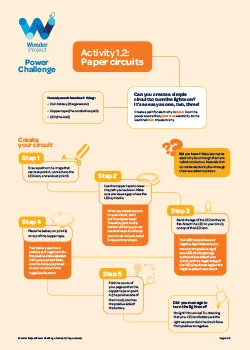
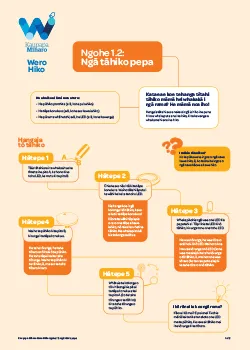
Reminder!
Start collecting recyclable materials to make your turbines.
Tools down!
Mīharo. Today you:
- Met your ambassador
- Unpacked your power kit
- Learned about energy
- Discovered and tested energy transformations
- Shone a light on electricity
- Created a simple paper circuit